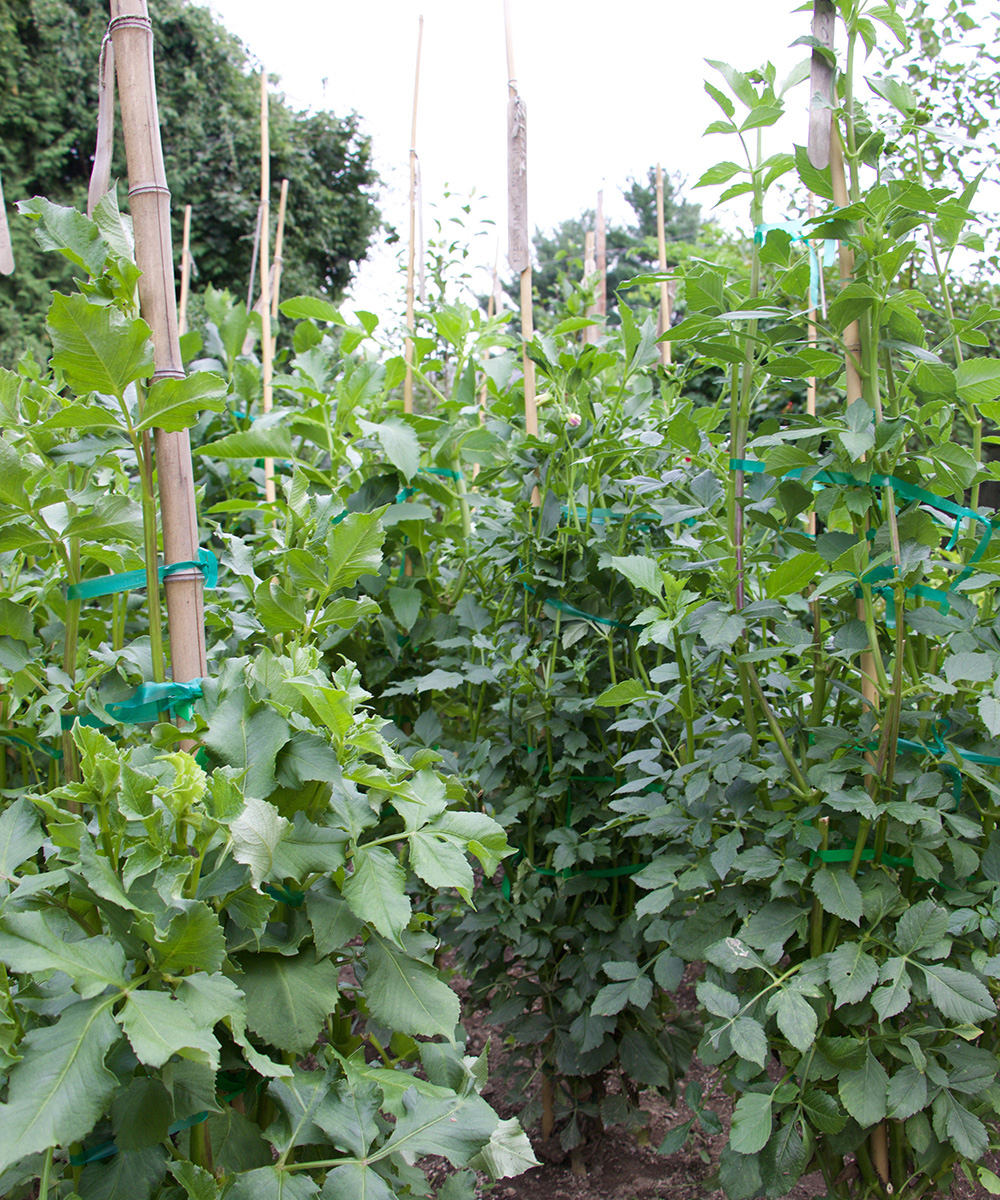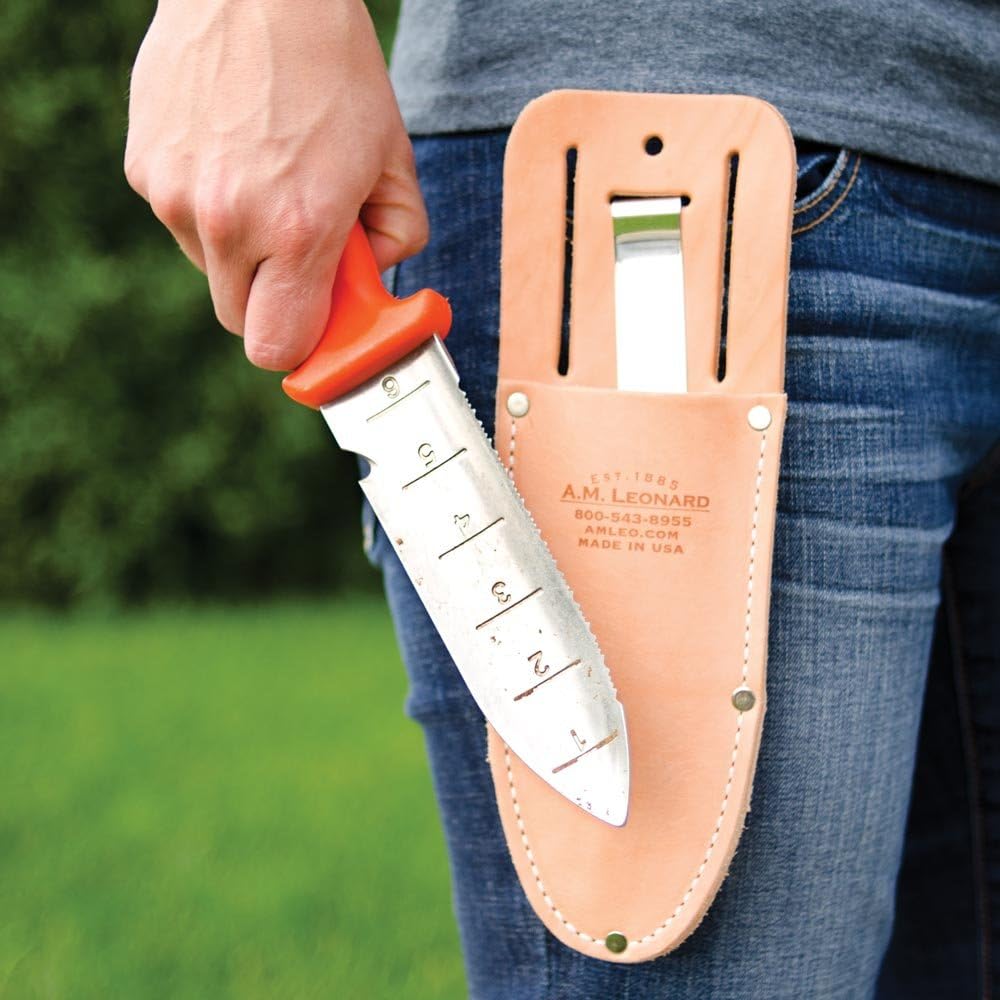My earliest memories of dahlias (Dahlia spp. and cvs., Zones 8–11) revolve around my grandfather, who grew them with gusto. His plants were neatly laid out in rows in the vegetable garden—cutting flowers, accessible for harvest, rather than specimens dotted through the borders.
My grandmother was the one to arrange them for the kitchen table or church bouquets. The vibrant arrangements were so exuberant. Dahlias are divas, and they command attention.
As for cultivation, I knew that the tubers were dug out and brought in each winter (this was Ohio), but it all seemed a bit mysterious, and it was a long time before I attempted to grow them myself. When I did, I initially thought that my approach was cheating, but I’ve since decided that my method is perfectly valid. I hope you’ll agree.
Dahlia Fun Facts:
- Dahlias are octoploids! This means they have eight sets of each chromosome, which explains their potential for such diversity.
- A true black dahlia is elusive. The closest we have is a deep blackish red, à la Chanel Rouge Noir (picture Uma Thurman’s nails in Pulp Fiction).
- It’s almost physically impossible to resist putting your hand around a pompon dahlia, according to my personal research.
Treat Your Dahlias like Annuals
Here’s my simple tip: treat your dahlias like annuals. This means you have two options each year:
Option 1: Order tubers online or from a catalog
After poring over catalogs and lamenting that you can’t have one of everything, finally select your favorites and place the order. Chelsea Belle of Bee’s Wing Farm in White Post, Virginia, suggests looking out for one or more of their bestsellers: ‘Sierra Glow’ (a salmon-colored dinner plate), ‘Isabel’ (a lavender ball), and ‘Blizzard’ (a white waterlily). All three varieties are particularly good in a vase, with long stems and good staying power.

When the time is right for your zone, growers will ship your order. Bee’s Wing Farm recommends tubers be planted in late April or early May for a late bloom period: “hot start, cool finish,” which means fewer insect problems and longer lasting blooms. Whatever you do, make sure you’re past the frost date for your zone.
When my tubers arrive, I follow the grower’s instructions regarding depth and orientation. I opt to plant them in large troughs because, again, it’s easy, and anyone with a few square feet of outdoor space can add a container. Then I water them and watch the plants grow. Pinching them back will promote fuller branching and more blooms but is not a necessity. Your plant will just have fewer flowers. I also implement the “Florida Weave” for supporting these tall growers and learned to use “hilling” for sturdier plants (see Top Tips below).
Next, I thoroughly enjoy the blooms, on the plants and in bouquets, and finally—that’s it. I leave it to chance as to whether the tubers survive the winter, which they rarely do. In other words, I treat them as annuals.

Option 2: Buy plants from the garden center
Sometimes, spring slips by and you realize that you forgot to plan ahead. No sweat—just wait for dahlia plants to be available at your local nursery. Gush over their beauty, pick your favorites, and plant them as desired.
Top Tips from Bee’s Wing Farm:
Have you heard of the “Florida Weave”? No, it’s not a line dance, it’s a strategy for trellising plants with stakes and twine. Most associated with tomatoes, this method is basically a horizontal basket weave: in front of one plant, behind the next, down the line and back again (now it sounds like a square dance). Repeat each time your plants get tall enough to need more support. This will work for plants in the ground or in a long trough.
Use the practice of “hilling” for sturdier plants. As with potatoes, this involves building up a little hill around the base of the young dahlia plants, maybe 4 to 5 inches high, covering the first few leaf sets.
Maybe someday I’ll dedicate more time to my cutting garden, but in the spirit of “good enough over perfect,” I’d rather grow dahlias this way than not at all. I asked Chelsea what she thought about this, and she gave her stamp of approval—let’s just enjoy more flowers! As for those lamenting my lack of craft, I double down with this: I also buy pre-chopped mirepoix, but, man, are my soups delish.

Find more dahlia advice and inspiration:
Discuss this article or ask gardening questions with a regional gardening expert on the Gardening Answers forum.
And for more Mid-Atlantic regional reports, click here.
Maureen Robinson is president of the Washington, D.C., Maryland, and Virginia chapter of the Association of Professional Landscape Designers (APLD).
Fine Gardening Recommended Products

A.M. Leonard Deluxe Soil Knife & Leather Sheath Combo
Fine Gardening receives a commission for items purchased through links on this site, including Amazon Associates and other affiliate advertising programs.
MULTITASKING DUAL EDGES: a deep serrated edge and a tapered slicing edge ideal for tough or delicate cuts. DURABLE 6-inch stainless steel blade withstands 300 lbs of pressure. TWINE CUTTING NOTCH, DEPTH GAUGE MARKINGS & spear point – no need to switch tools when using this garden knife. LEATHER SHEATH: heavy duty, protective, clip on sheath to keep your knife convenient and secure. LIFETIME WARRANTY.

